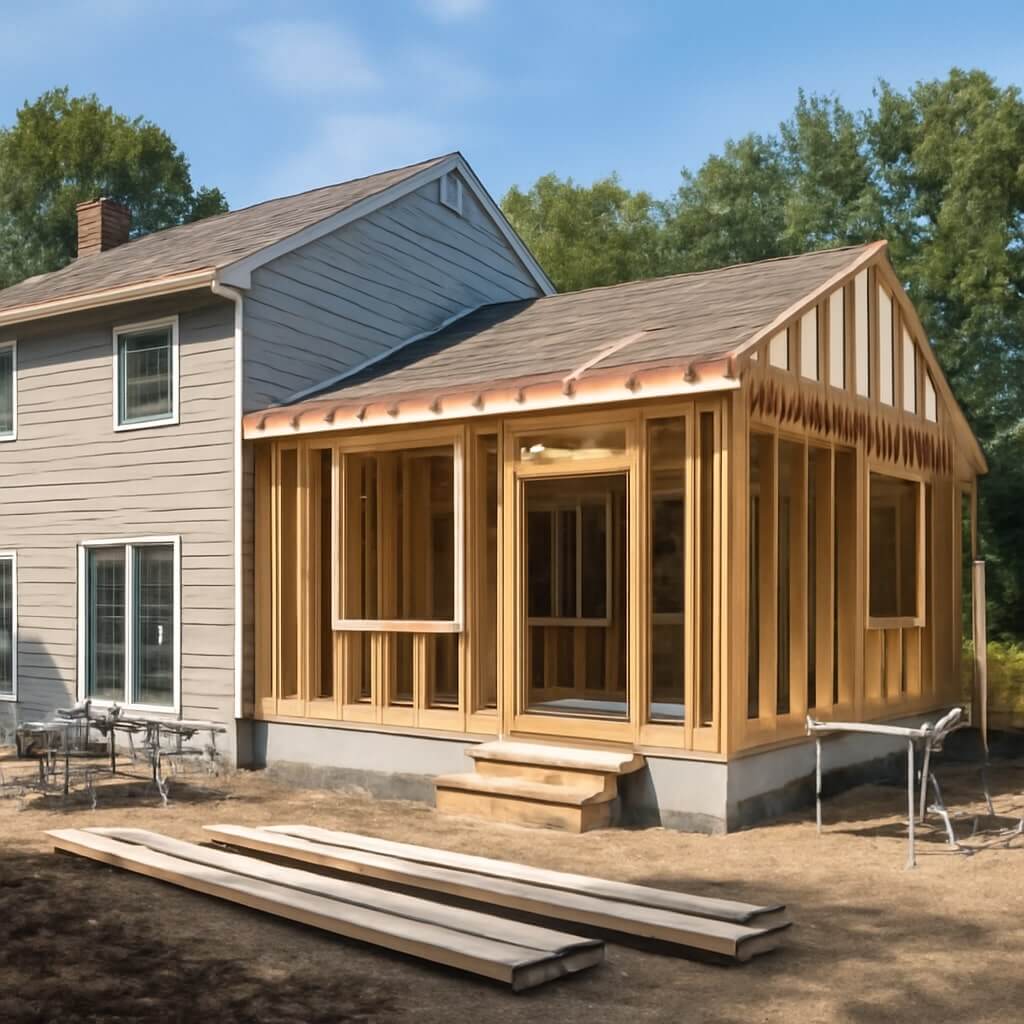When planning your home addition, you’ll need to navigate several critical factors to guarantee success. Understanding local building codes and securing the right permits is essential to avoid costly delays. You’ll also want to establish a realistic budget that covers all expenses, including contingencies. As you think about design and materials, remember that functionality and quality go hand in hand. But how do you effectively manage the timeline and disruptions that inevitably arise?
Key Takeaways
- Research local building codes and obtain necessary permits to ensure compliance and avoid project delays.
- Establish a realistic budget that accounts for materials, labor, and unexpected costs.
- Design a functional layout that meets your lifestyle needs and complements your existing home.
- Select quality, sustainable materials to enhance durability and reduce maintenance efforts.
- Plan for disruptions and manage timelines effectively to keep the project on track.
Understanding Local Building Codes and Permits
When planning a home addition, understanding local building codes and permits is essential to guarantee your project runs smoothly.
Start by researching zoning regulations that apply to your property; these rules dictate what you can build and where. Each municipality has specific guidelines, so familiarize yourself with your area’s requirements.
Next, prepare your permit application meticulously, including necessary drawings and documents. Incomplete applications can lead to delays or rejections.
Establishing a Realistic Budget
How can you guarantee your home addition project stays within financial limits? Start with accurate cost estimation; itemize expenses like materials, labor, and permits.
Don’t forget to factor in unexpected costs—set aside at least 10% of your budget for contingencies.
Explore various funding options, such as home equity loans or personal loans, to ascertain you have the necessary capital.
Research local grants or incentives that might be available for home improvements.
Choosing the Right Design and Layout
What factors should you consider when choosing the right design and layout for your home addition? First, prioritize modern aesthetics that complement your existing structure while ensuring visual harmony.
Think about how the new space will flow with your current layout, creating functional spaces for daily use. Consider your lifestyle needs—do you require a home office, an expanded kitchen, or a playroom?
Visualize the arrangement of furniture and traffic patterns to maximize usability. Finally, remember to incorporate natural light and efficient storage solutions, enhancing both beauty and practicality.
A well-planned design elevates your home’s overall functionality and appeal.
Selecting Quality Materials
Selecting quality materials for your home addition is essential to ensuring durability, aesthetics, and overall value. Opting for sustainable materials not only benefits the environment but also enhances material durability, reducing long-term maintenance costs. Here’s a comparison to guide you:
| Material Type | Benefits | Considerations |
|---|---|---|
| Bamboo | Eco-friendly, strong | Requires proper treatment |
| Recycled Steel | High durability, recyclable | Corrosion potential |
| Engineered Wood | Stable, versatile | Sensitive to moisture |
| Natural Stone | Aesthetic appeal, durable | Higher cost |
| Insulated Concrete | Energy-efficient, strong | Heavy, requires skilled labor |
Choose wisely!
Planning for Disruption and Timeline Management
Choosing quality materials sets the foundation for your home addition, but as you commence on this project, it’s essential to prepare for the inevitable disruptions that come with construction.
Effective disruption management involves anticipating potential delays and communicating openly with your contractor. Regularly assess your project’s progress and be ready to implement timeline adjustments when unexpected issues arise, such as weather or material shortages.
Create a buffer in your schedule to accommodate these changes, ensuring your vision remains intact while minimizing stress. By proactively managing disruptions, you’ll keep your home addition on track and maintain a harmonious living environment throughout the process.
Conclusion
To sum up, planning your home addition requires a careful balance of technical knowledge and creative vision. By understanding local building codes and securing permits, establishing a realistic budget, choosing the right design, selecting quality materials, and effectively managing your timeline, you’ll set the stage for a successful project. Stay proactive and maintain clear communication with your contractors to navigate challenges smoothly. With these considerations in mind, you’re well on your way to creating the perfect space for your needs.

